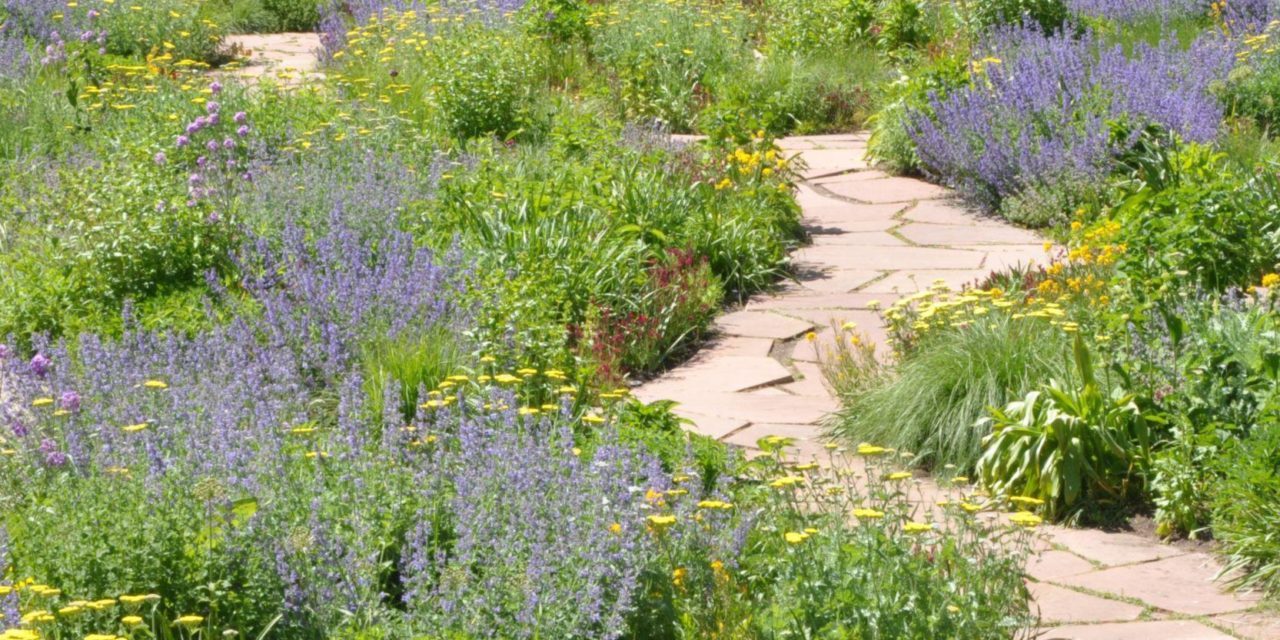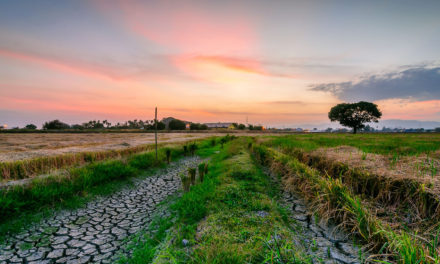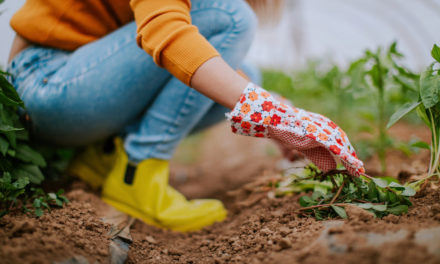Maybe it’s the cost of water, or the mowing, or a desire to provide better habitat for native pollinators. Whatever the reason, you want to replace some of your lawn with a native plant garden or just mulch.
First, you need to kill and remove your turf. You might ask: “Why can’t I just turn the water off and let the lawn die on its own?” You can, but you won’t like the results. Even if your lawn is pristine bluegrass with nary a weed, what you likely will get is a dry weedy patch where only the crabgrass, dandelions and thistles survive. And thrive they will, with no competition. Native vegetation likely can’t compete with these weeds.
The fastest method is to use a broad spectrum weed killer such as glyphosate. An alternative is to turn off the water and solarize the lawn by covering it with black plastic for about two months starting in spring. That has an advantage over herbicides, heating the soil to a point where most weed seed will be killed. A more aesthetically pleasing alternative is to cover the area in newspaper, at least 10 pages thick, and cover the newspaper with 2 inches of wood mulch. Wet it down (to prevent blowing) and leave it in place several weeks or even until the following spring. As the newspaper breaks down, it will add organic matter to the soil.
Once the turf is dead, you need to decide whether to remove the root and thatch layer. If you are just going to mulch the area, you can leave it in place. If you do so, mow and rake it so the layer is as thin as possible. On a steep slope, the root systems may help prevent erosion.
If the plan is to start native vegetation from seed or plants, you should expose bare soil. The roots and thatch of the dead turf can be removed by rototilling and raking. In smaller areas, you can just dig up the dead turf. Once the turf is removed, amend the soil, then plant either by seed or plants.
When choosing plants, the major criterion is the amount of sun available. If your garden receives less than six hours of direct sun a day, you might have to look for a shade-tolerant pallet of plants. Dry shade is the most challenging environment for gardeners, but you can find some appropriate native plants. For really shady environments (less than four hours of direct sun), consider shrubby plants and ground covers such as Oregon grape holly (Mahonia repens) or kinnikinnik (Arctostaphylos uva-ursi). These plants thrive as undergrowth in forested mountains.
Sunnier environments allow you to choose from the wide array of prairie and desert plants. Prairie flora includes native grasses and flowering plants that with the right conditions will thrive on little water and lots of sun. Grasses include blue gramma grass (Bouteloua gracilis), with its characteristic “eyelash seedpods,” or big bluestem (Andropogon gerardii). These native grasses can be started from seed or plants. Most of them are warm season grasses. That means they will green up much later than your fescue or bluegrass lawn.
Prairie plantings also feature a wide variety of flowering plants. Black-eyed Susan (Rudbeckia hirta), Rocky Mountain penstemon (Penstemon strictus) and prairie zinnias (Zinnia grandiflora) are only a few of a very large group of native flowering plants.
While prairie plants can be started from seeds, I do not recommend native plant seed mixtures. These mixes can contain aggressive weedy plants that can take over your seedbed. It can be difficult to sort out what is coming up when multiple species are emerging simultaneously. I prefer to purchase seed for each variety, and then sow in drifts. It is easy to identify what is emerging in each drift and weed out the interlopers. An alternative, if the budget allows, is to buy plants and establish your natives more quickly.
Dryland desert plants are good for very hot and sunny areas. Many of these are succulents or cactus. Soils must drain well to support this plant life. Prickly pear cactus (Opuntia macrorhiza) and plains yucca (Yucca glauca) are two examples that might work well in the Pikes Peak region.
Over the first couple of seasons, you will have to water all of these plantings in order to establish the garden. Once established, these plants will thrive with very little supplemental irrigation. Fertilization needs tend to be lower for these plants than for non-natives. It might make sense to apply a bit of mulch between plants during the establishment phase to minimize evaporation and suppress weeds.
Colorado Master Gardeners are available to answer your questions at the extension office help desk (17 N Spruce St.). The desk is staffed 9 a.m. to noon and 1 to 4 p.m. Mondays and Wednesdays. Help desk volunteers also can be reached by phone at 719-520-7684 or email at csumg2@elpasoco.com. Find answers online at ask.extension.org. Follow the El Paso County Master Gardeners on Facebook.

 Photo Credit: Fredricka Bogardus
Photo Credit: Fredricka Bogardus




Comment on: Going native by converting turf to native plants